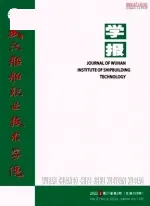浅析民航专业英语的语言特点
孙文娟
(中国民航飞行学院洛阳分院,河南洛阳 471000)
20世纪50年代,国际民航组织把英语确定为国际民航通用语言。民航英语作为一种科技语言呈现出了不同于普通英语的诸多特点。目前,科技英语正逐步引起科学界和语言学界的关注和重视。许多国家设立科技英语研究中心,专门从事科技英语语言的研究。我国也在北京和上海设立此项机构。但是,民航英语作为科技英语的一个重要分支,尚未引起足够的重视。民航业是一个朝气蓬勃而又发展迅速的领域,对民航英语的研究也将具有重要的理论价值和现实意义。民航英语的语言特点主要体现在以下几个方面:
1 词汇特点
1.1 大量使用缩写词
从而使表达简洁明了。缩写词由每个单词的首字母构成,通常用大写字母表示。如:
VOR:Very High-frequency Omni-directional Range(甚高频全向信标)
VSI:vertical speed indicator(升降速度表)
PFD:Primary Flight Display(主飞行显示)
FMC:Flight Management Computer(飞行管理计算机)
ILS:Instrument Landing System(仪表着陆系统或盲降系统)
1.2 大量使用合成词
合成词由两个或两个以上的单词构成。民航英语中各种不同词性构成的合成词俯拾皆是:
名词+名词:airman(飞行员),aircraft(飞机),airplane(飞机),airflow(气流),airliner(客机),airway(航路),gearbox(齿轮箱),等。
形容词+名词:main-wheel(主轮),highfrequency(高频率),dual-chamber(双燃烧室),auto-pilot(自动驾驶仪),auto-throttle(自动油门),low-pressure(低压),high-pressure(高压)
动词 +名词:control-column(驾驶杆),control-wheel(驾驶盘),check-list(检查单),push-button(下压按钮),runway(跑道)等。
介词+名词:en-route(在航路上),inflight(在飞行中),off-center(偏心),overheat(超温,过热),on-course(在航道上),等。
名词 +动词:troubleshoot(充当故障检修员),nose-dive(机头俯冲),cruise-climb(巡航爬升),direction-finding(方向探测),shock-absorbing(吸收撞击力),ground-looping(打地转)
由连字符连接两个或多个单词构成的合成词:pilot-in-command(机长),push-to-talk switch(按讲开关),co-pilot(副驾驶),pushand-pull(推拉),well-thought-out(考虑周密的),side-by-side(并排)
1.3 频繁使用派生词
英语的构词法主要有合成、转化和派生三大手段。通过加前缀或后缀构成的派生词在民航英语中得到了非常广泛的应用。
前缀派生词,例如:anti-ice(防冰),antiskid(防滑装置),anti-collision(防撞),anti-aircraft(防空用的),anti-drag(减阻),anti-fogging(防雾),anti-freeze(防冻液),antiradiance(防辐射)
Aero:aerobat(特技飞行员),aerodynamics(空气动力学),aerocraft(飞机),aerocruise(大气层巡航),aerodrome(飞机场)
De:depressurization(减压),decelerate(减速),deicing(除冰),defuling(放油)等等。
后缀派生词的构成是在词干的尾部加后缀。后缀一般都可用做单词的语法标记,其语法功能比语义功能更为突出。如:detect(探测,动词),detector(探测器),detection(探测,名词);extinguish(熄灭),extinguishing agent(灭火剂)等等。
1.4 一词多义
Gear:Landing gear(起落架),gear box(齿轮箱)
Generator:oxygen generator(氧气发生器),AC generator(交流发电机)
override:override switch(超控);
e.g.On the aircraft,flight attendant announcements override the music system(优先于).
1.5 词语搭配多
在民航英语中,由名词搭配组合成不同的专业术语。如:
Bus:battery bus(电瓶汇流条),transfer bus(转换汇流条),common bus(公共汇流排),primary bus(一次汇流排),storage-in bus(存储器的输入总线),storage-out bus(存储器的输出总线)
Lever:thrust lever(油门杆),landing gear lever(起落架收放手柄),release lever(释放手柄),brake lever(刹车杆),fuel lever(燃油杆),operating lever(操纵杆),power lever(功率杆),propeller lever(螺旋桨杆),regulating lever(调节杆)
由此可见,按照相同专业或相同主体词对词汇进行归类概括,可以收到事半功倍的效果。
2 句法特点
2.1 被动结构的大量使用
这一特点是所有科技英语中最为显著的特征。由于科技英语注重描述客观性事物,强调事实真理,所以被动句的使用非常普遍。
e.g.When any working system is operated,for example,the landing gear is being retracted as the selector valve is selected to“UP” position,the fluid stored in the accumulator under high pressure will first flow through the selector valve to the actuating cylinder.
2.2 为了使句子简短
并且能够准确严密地反映各个句子成分之间的关系,民航专业英文资料中大量使用非谓语动词形式。
Landing gear arrangements having a nosewheel are usually equipped for nosewheel steering.
分词短语“having a nosewheel”用做后置定语,使句子结构简洁明了。
e.g.These are surfaces which,when deflected,alter the pattern of the airflow around the wings and the tail sections,causing changes in the aerodynamic forces that they generate.
“When deflected”是插入语,其正常的书面表达是”when the surfaces are deflected”.“causing changes…forces”是现在分词短语,做动词”alter”的状语,表示结果。
The attitude(or position in flight relative to the earth)of the airplane is controlled using the main flight controls.
现在分词“using”引导方式状语,这样可以缩短句子,使行文简练,结构紧凑。
2.3 大量使用名词化结构
Knowing your best engine-out glide speedand best climb speed might mean the difference between youmaking the airport orending up in the trees.
这种名词化结构句型简单,表意客观,信息量大,在很多情况下可以省去过多的主谓结构。
2.4 多使用倒装句式
利用特殊的句子成分排列顺序从而达到强调句首部分的目的。
(1)Not until the jet engine had come into use could planes travel at supersonic speeds.
(2)Directly in front of the pilot is the control column.
2.5 经常使用省略句
省略的目的是为了避免重复。
(1)祈使句的省略。这种句子常见于民航英语中的实验指导,操作说明等方面。祈使句中省略的主语是”you”。例如:
1)Take the Boeing 737 as an example.
2)Name five different kinds of airplanes.
(2)并列复合句的省略。第二或以后分句中常被省略与第一分句相同的部分。例如:
1)Some landing gears are retractable,but others are not.
2)It is displayed above with positive vertical speed and below with negative one.
(3)主从复合句中的省略。
1)The cargo-passenger capacity of Boeing-737 is not so much as that of Boeing-747.
2)The DC generator is the same in construction as the DC motor.
2.6 常用结构复杂的长句
为了准确表达事物之间的逻辑关系,民航英语的书面文体经常会使用一些长句。分析这类句子时,首先要找出句子的主谓结构,分清主句和从句,然后再根据其他词组或短语的位置和意义来确定次要成分的作用。
1)The newest generation of transponder operates in Mode Select,or Mode S,which allows the transponder to be addressed individually and enables data to be passed between ground radars and airplanes and between airplanes,so two airliners can exchange coordination information in order to execute avoidance maneuvers.
在此长句中,Which引导的从句which allow…between airplanes是非限定性定语从句,修饰Mode Select。并列连词“so”连接表示两个概念的分句。整个长句的意思是:最新一代的应答机是以方式选择或方式S型进行工作。这使应答机能寻址并在地面雷达与飞机之间,或两架飞机之间传递数据,因此两架飞机能相互交换坐标信息,以便实施空中防撞机动飞行。
2)During the 1990s,we can expect to see more research performed on all aspects of human factors in flight and ever-greater emphasis placed on fudgment training and the decisionmaking process as we gain greater knowledge of variables that affect flight safety.
在本例句中,过去分词短语performed on…in flight和placed on…process在剧中做定语,分别修饰research和emphasis。as引导的是时间状语从句,意为“当…的时候”。that affect flight safety是定语从句,修饰先行词variables。句子的意思是:在20世纪90年代,随着我们不断丰富自己关于影响飞行安全可变因素的知识的同时,我们希望看到对飞行中的人为因素开展更多的研究,对判断的训练和决策过程给予更多的重视。
3 形态和文体特点
民航科技英语在时态运用上有限,多用一般现在时,只在叙述过去的实验和发现时用一般过去时,有时也用现在完成时表示与现在有直接联系。如:
1)The basic airplane consists of a fuselage,wings,an empennage,wheels and engines.
2)Twenty years ago,the Boeing 727 introduced a major innovation to commercial aviation in the form of an auxiliary power unit.
3)The control column has changed little in appearance over the years.
民航专业英语注重行文的简洁、清晰、流畅、准确、逻辑性强,避免语言晦涩、表露个人感情、过多运用修辞手法等。
在阅读民航英语文章时,了解以上各种民航英语的语言特点,将有助于更好地理解和掌握文章的内容。
1 陈新.英汉文体翻译教程[M].北京:北京大学出版社,1999.
2 李玉梅.中国民航飞行人员英语阅读教程[M].北京:中国民航出版社,1996.
3 吴仁华.民航科技英语翻译初探[J].贵州工业大学学报,2003(1).
4 王爱国.航空英语的构词特点及翻译[J].中国科技翻译,2004(4).
5 杨爱荣.民航英语的文体与语言特征[J].中国民航学院学报,2005(5).
——意群—动态对等法

